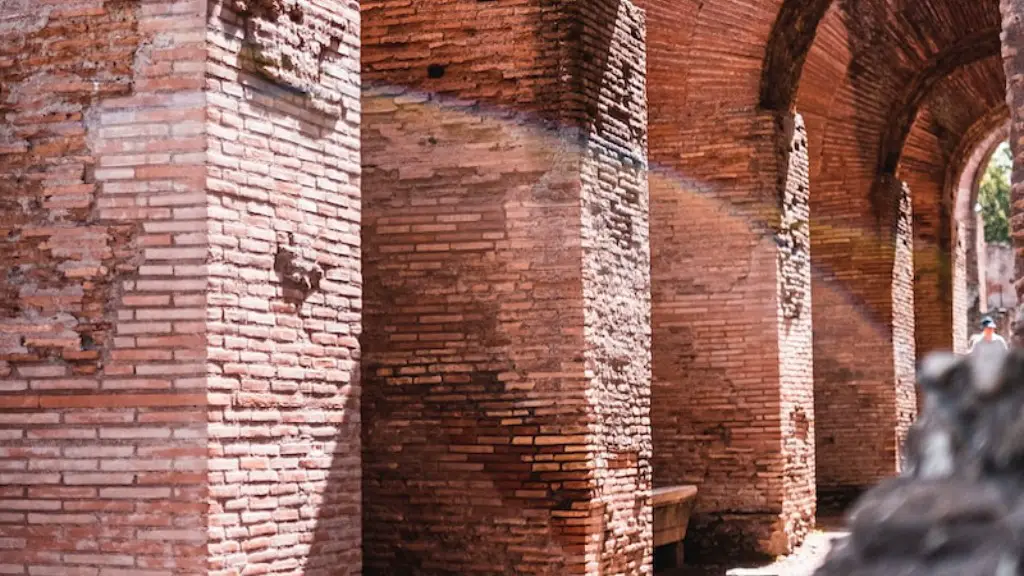Ancient Rome is known for many things but one thing that wasn’t so popularly known is that urine was used for various purposes, some surprisingly ingenious. In the bustling streets, urine was found to be particularly useful for all sorts of odd jobs and tasks. Urine was collected and sold off to the tanneries who used it to wash animal hides in their tanning processes. The ammonia found in the urine helped with making the leather soft and pliable, thus giving it a more desired quality. In addition to this, urine was also used to whiten clothing. Laundry detergents weren’t around back in the day, so people sometimes resorted to washing their clothes in a mix of ashes, water and urine. The acidic nature of the urine and protein enzymes extracted from it would help to brighten the clothing.
Urine was also used as an ingredient in many medicines. Ammonia compounds found in the urine were a part of many popular medicines and remedies in Ancient Rome. It was believed that these compounds had healing effects and could help with reducing infections and improving the blood’s circulation throughout the body. Urine was also applied to the skin to treat skin issues such as eczema and psoriasis. This was done by placing a soaked cloth into the warm urine and then applying it over the affected area. The high levels of nitrogen and minerals caused the skin to become softer and the itching would often vanish away.
Urine has a lot ofuses in Ancient Rome, but one of the most peculiar was for purification. Ancient Romans believed that urine had disinfectant properties and could help purify the air. It was believed that the ammonia in the urine helped ward off pests and insects, which were a common problem in these times. Urine was also used to clean and disinfect utensils, plates and other kitchenware. This technique was particularly popular in households as it allowed them to remove dirt, grease and food particles from the items without having to use water. Urine was unfailingly used after birth to cleanse a newborn’s eyes in order to protect them from contracting any diseases.
Urine was even used to clean the Coliseum of Rome. The Coliseum was a huge structure and the Romans found that its walls and floors needed to be thoroughly cleaned in order to maintain its beauty. To do this, they used a mix of sand, ash, vinegar and, of course, urine. This mixture was then scrubbed onto the walls and floors and allowed to soak in. After a while. the mixture was then scraped off and the walls and floors were left looking cleaner and brighter than before!
Clearly, urine was used for many purposes in Ancient Rome. Its ammonia compounds were found to be useful in the tanning process, for medicinal remedies, for purification and for the cleaning of the Coliseum. This demonstrates how creative and resourceful the Ancient Romans were in making the best use of available resources.
Urine in Cosmetics
One thing that may come as a surprise if you’re unfamiliar with its use is that urine was also used as an ingredient in cosmetics. During the Roman Empire, a popular cream-based substance called Cachexia was produced using bone marrow, pig fat and human urine. This concoction was said to have multiple benefits, such as reducing wrinkles and improving skin coloration. Urine was also used to make a type of hair pomade that was popular amongst the rich and powerful members of society. The combination of pig fat and urine gave it a glossy and waxy feel while also helping to condition the hair, making it softer and more manageable!
Urine as Fertilizer
Urine was also used for some more practical purposes. It was found to be an effective fertilizer for crops, as its high levels of nitrogen, potassium and phosphorus helped to encourage the growth of plants. In some areas, human and animal urine were mixed together with other fertilizers and then sprinkled over the fields. This process not only increased the yields from the fields, but also helped to safeguard against potential crop failure. In addition to this, it was observed that applying urine around the outside of certain plants could create a natural barrier against pests and insects.
Urine was also used in the creation of individualized plant and herb remedies called ‘urinoscopy’. For this, a plant was placed in a mixture of urine, water and alcohol and then distilled in order to extract its specific chemical properties. This was then used to create various concoctions, such as balms, pastes and creams that were said to have healing and regenerative powers.
Urine as Currency
During certain times, urine was even used as a type of currency in Ancient Rome. Its high level of ammonia gave it an almost ‘sterling’ value, allowing it to be exchanged for goods and services. The most prized type of urine was known as ‘urinaea’, which was a mix of human and animal urine taken from communal pits around the city. This type of urine was often used to barter for items at the marketplace, such as food and clothing.
Urine was even found to be useful in trade. In the days before currency and coins, the people of Pompeii and Herculaneum sent out their wine in vessels filled with human urine. This form of liquid currency was far more stable and easier to transport, as it had a much longer shelf life. This allowed them to trade their goods for goods and services with different neighbouring regions who didn’t accept the currency of their Roman counterparts.
Urine and Water Supply
In Ancient Rome, there was a shortage of clean drinking water. Even though the cities had a number of aqueducts and other infrastructure, the scarcity of clean drinking water was very real. It was to address this problem that the Romans started to use urine in the cleaning of the city. By collecting and distributing urine from the citizens, the Romans were able to significantly reduce the levels of contamination in the water supply. Urine has a high concentration of ammonia and nitrates which helps to make it an effective disinfectant, and so it was used to purify the city’s water supply. This form of self-propagating sanitation also encouraged the citizens to be more responsible with their waste and to maintain more hygienic lifestyles.
Urine and Religion
In some religions and cultures, urine was used as a purification ritual known as ‘urophagy’. This ritual was used by the priests of certain cults who would drink from a vial containing the urine of their gods as a symbol of devotion and piety. Urine was also used in certain temples for religious ceremonies, where it was believed to have special properties that can purify the soul.
Urine was not only used for religious and medicinal purposes, but it was also an important part of daily life in Ancient Rome. From cleaning and purifying to creating medicines and fertilizers, it is clear that the Romans were creative in their use of this valuable resource. Even though urine may seem gross and unappetizing to some, it could have surprising benefits when used in the right ways.



